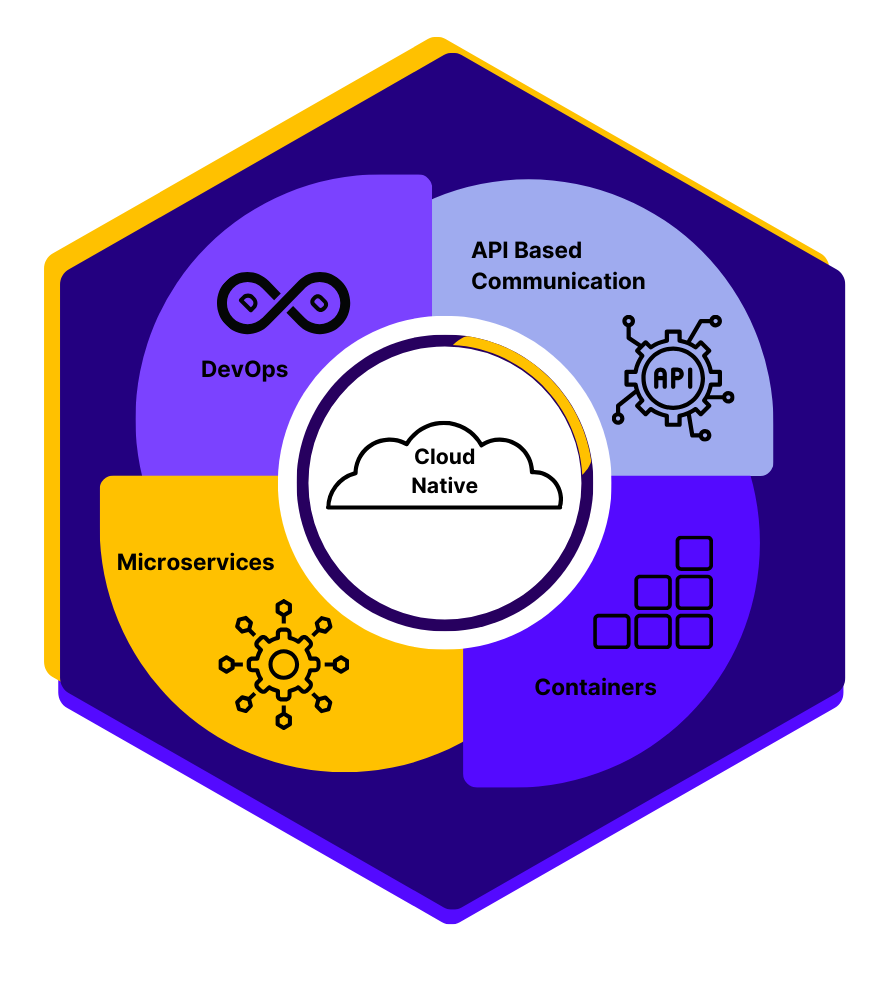As Cloud-based architecture becomes the norm for most technology services – B2B and B2C, Cloud computing and Cloud-native are terms that we see being used interchangeably. However, they actually have very different meanings and implications. This blog is aimed at clearing up the confusion, once and for all.
Cloud computing vs. Cloud-native
Cloud computing refers to the delivery of computing services on demand over the network. Instead of relying on local servers or personal computers, users can access and utilise various computing resources, such as servers, storage, databases, software, and applications, through the internet.
Imagine you have a task that requires significant computational power, like rendering a high-definition video. In traditional computing, you would need a powerful computer with the necessary hardware and software. With cloud computing, you can offload this task to a remote data centre, where powerful servers handle the computation. You can access these servers over the internet and pay for only the resources you use, rather than investing in expensive equipment upfront.
Cloud-native, on the other hand, refers to an approach or mindset for developing and deploying applications optimised for Cloud environments–unlike traditional methods that rely on local servers and on-premises infrastructure.
A Cloud-native application is designed and developed with the Cloud in mind from the very beginning. It leverages Cloud services and embraces modern architectural principles like microservices, containerisation, and orchestration.
Let’s consider an analogy of a restaurant to better explain Cloud-native vs. Cloud computing.
Cloud computing is like a buffet restaurant. You can order whatever you want and eat as much as you want, but you do not have any control over the food preparation or presentation.
Cloud-native is like a build-your-own-meal restaurant. You start with the basics, and then you can add your own toppings and condiments. You have complete control over the final product.
The buffet represents the Cloud provider; with Cloud computing, you can choose from a wide variety of pre-built services, such as computing power, storage, and networking. You do not have to worry about managing the underlying infrastructure.
The build-your-own-meal restaurant represents the Cloud-native application. You start with a basic foundation, such as a container or microservice, and then you can add your own code and functionality. You have complete control over how the application is built and deployed.
Overall, Cloud computing and Cloud-native are complementary technologies. Cloud computing provides the underlying infrastructure that Cloud-native applications need to run. By combining Cloud computing with Cloud-native development, organisations can build applications that are more agile, scalable, and resilient.
Key characteristics of Cloud-native applications
Cloud-native applications are typically built using modern development practices like microservices architecture, containerisation, and orchestration. They are highly modular; meaning they consist of small, independent components (microservices) that can be developed, deployed, and managed separately. This modular design allows for easier scalability, resilience, and rapid deployment of new features.
A Cloud-native SaaS (Software-as-a-Service) application refers to a type of software application that is designed, developed, and deployed following the principles of Cloud-native architecture and is delivered as a service over the internet. Imagine you need a specific software application to perform a task, like managing customer onboarding and payments or handling payroll. Instead of purchasing the software and installing it on your computer or server, a Cloud-native SaaS application allows you to access and use the software directly through a web browser.

Cloud-native: how it works
Architecture: a Cloud-native SaaS application is built using Cloud-native architecture principles, such as microservices, containerisation, and automation. These modern development practices enable the application to be highly scalable, flexible, and resilient.
Multi-tenancy: The SaaS application is designed to support multiple customers, known as tenants, on a shared infrastructure. Each tenant’s data is securely isolated from other tenants, ensuring privacy and security.
On-demand access: as a user, you can access the application anytime and, from anywhere through a web browser. You do not need to worry about installation, maintenance, or upgrades, as the provider takes care of all the infrastructure and software updates.
Pay-as-You-Go: with a Cloud-native SaaS application, you typically pay a subscription fee based on your usage. This pay-as-you-go model allows you to scale your usage up or down as needed, avoiding the need for significant upfront investments.
Continuous delivery: Cloud-native SaaS applications often benefit from continuous delivery, which means that new features, enhancements, and bug fixes are regularly released by the provider without any disruption to your access or workflow.
Orchestration: orchestration in Cloud-native SaaS applications is the process of automating the deployment, scaling, and management of Cloud-native applications. It is a key component of Cloud-native architecture, as it allows you to focus on building applications, rather than managing infrastructure.
Read the original article here.
